This poetic street art paying homage to old Shanghai is being erased by government bureaucrats
Chinese authorities are taking some heat for scrubbing graffiti from the walls of a soon-to-be-razed neighborhood in Shanghai’s central Jingan district. The graffiti—whimsical images of a girl asleep clutching a book or guarding a home accompanied by classical Chinese poetry—was popular with locals who were fond of exploring the crumbled homes and buildings for a glimpse of street art, which is largely absent from most Chinese cities. Couples had begun to take their wedding photos there:
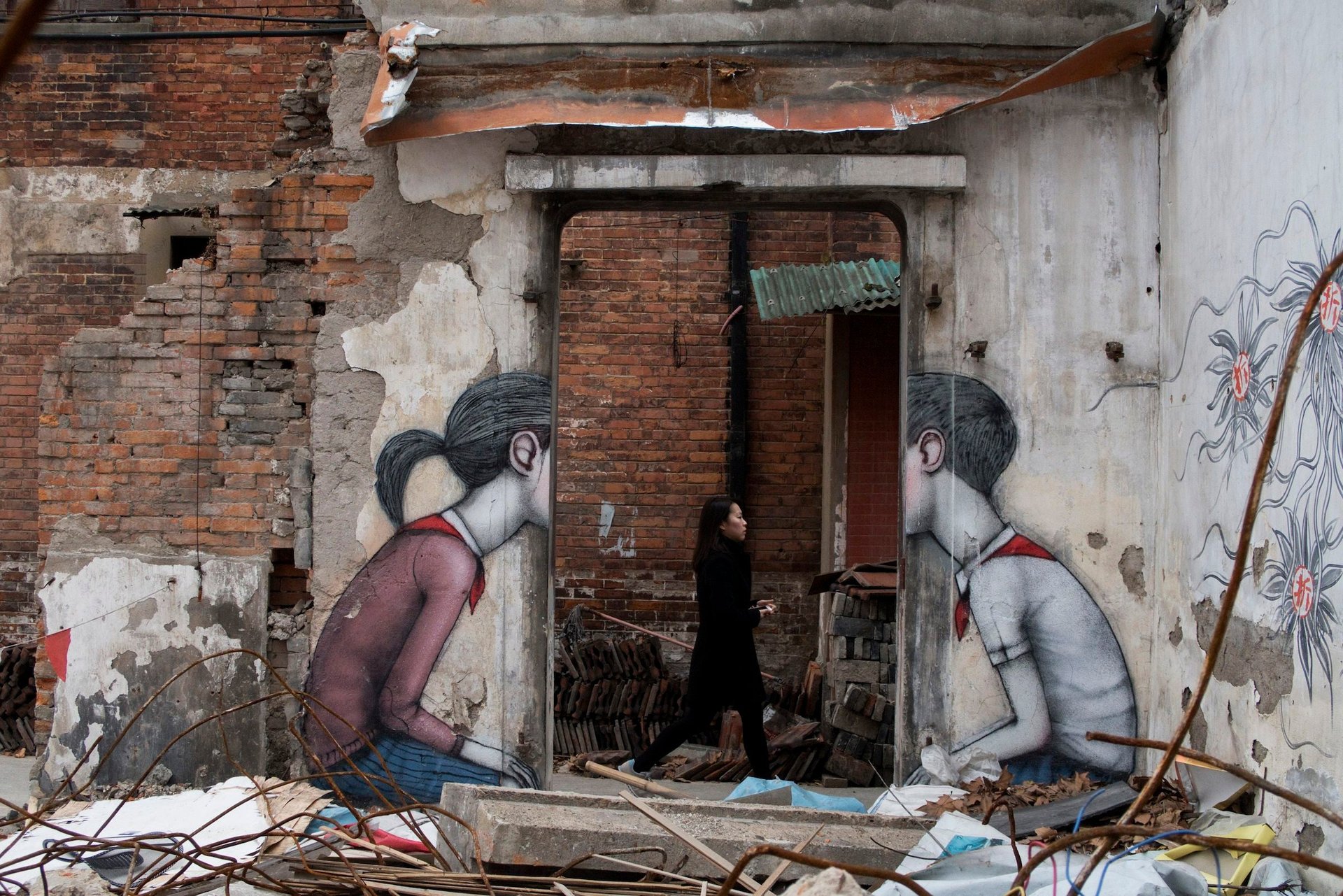

Chinese authorities are taking some heat for scrubbing graffiti from the walls of a soon-to-be-razed neighborhood in Shanghai’s central Jingan district. The graffiti—whimsical images of a girl asleep clutching a book or guarding a home accompanied by classical Chinese poetry—was popular with locals who were fond of exploring the crumbled homes and buildings for a glimpse of street art, which is largely absent from most Chinese cities. Couples had begun to take their wedding photos there:
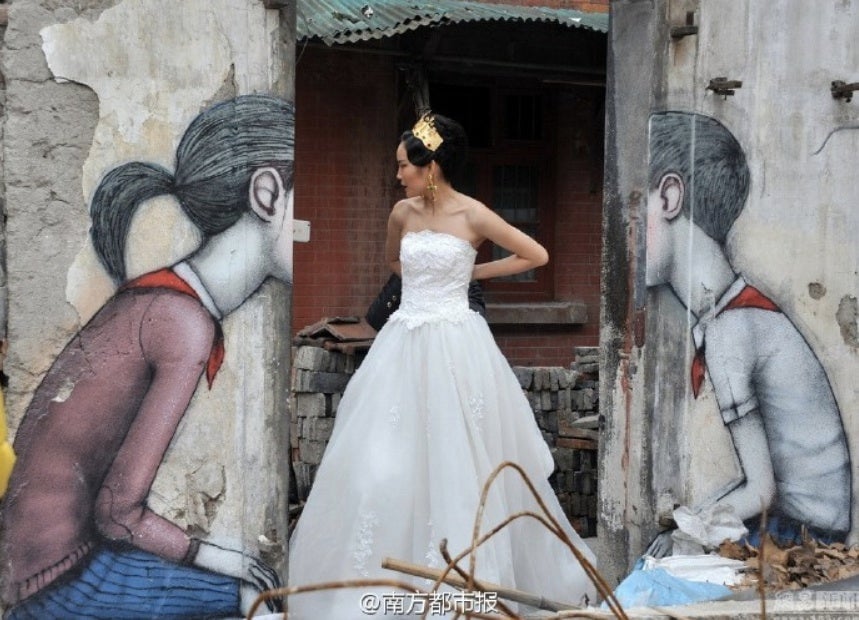
Officials said the graffiti was cleared over the weekend for safety reasons, to prevent locals from visiting the decrepit buildings that could collapse. One official told Chinese media, “There are a lot more ways for people to enjoy folk art in Jingan district that are also free of charge and quite good.” (Officials in Shanghai have cracked down on graffiti before–at the end of 2013, the city’s only sanctioned wall for street art on Moganshan Road was torn down.)
For residents and other observers, the issue is about more than free folk art, but the suppression of creativity. Bloggers left hundreds of comments (registration required) on a news article about the clearing posted on Weibo. One blogger wrote, “The main thing is that our government is throttling the ideas and creativity of its people.” Another added, “The heart of the authorities is so ugly, they can’t even tolerate ephemeral beauty.” One user said, “Art is not the enemy of power.”
The graffiti may have also been popular because of a sense of nostalgia it evoked toward Shanghai’s quickly disappearing traditional neighborhoods. The neighborhood on lane 600 Kangding Road was one of the few remaining examples of shikumen, narrow townhouses that combine Western and Chinese architecture that first became popular in the 1860s. In this picture, the Chinese character chai, which demolishers scrawl on buildings to signal which ones will be torn down, is drawn as the fruit on a tree:
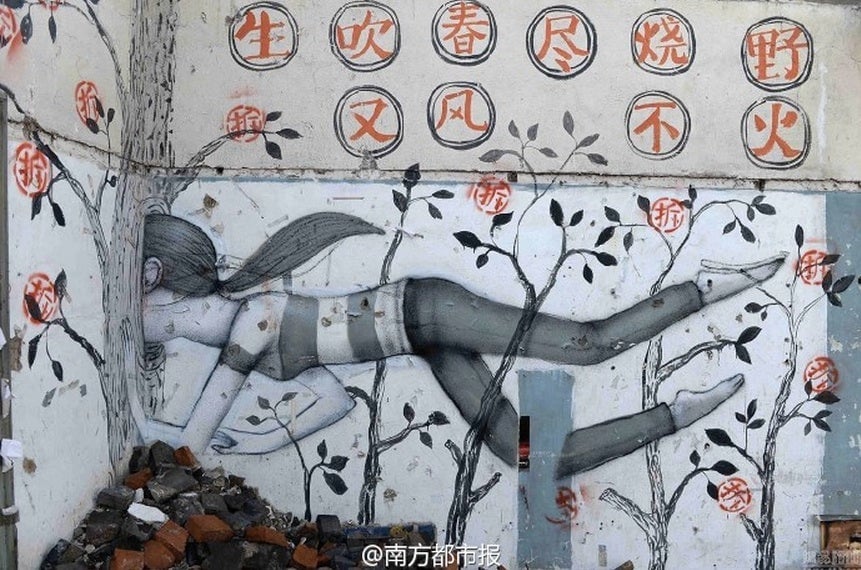
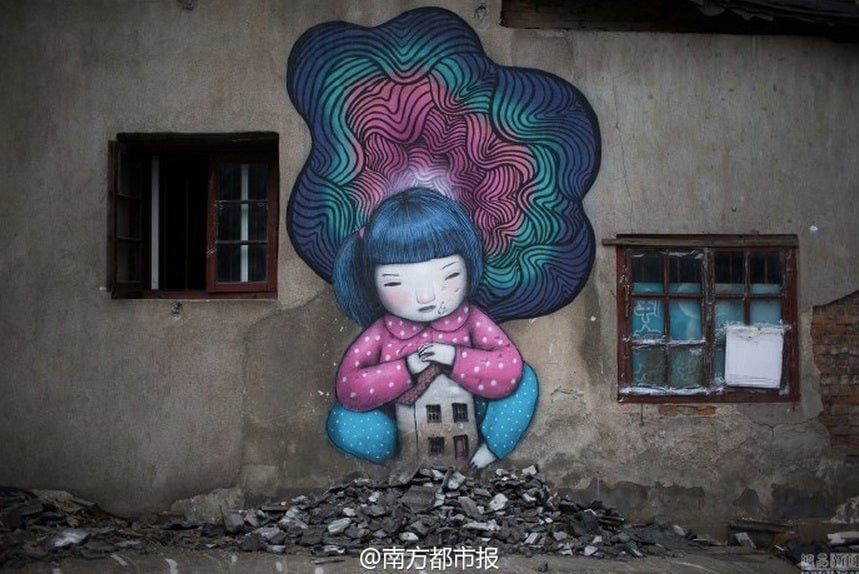
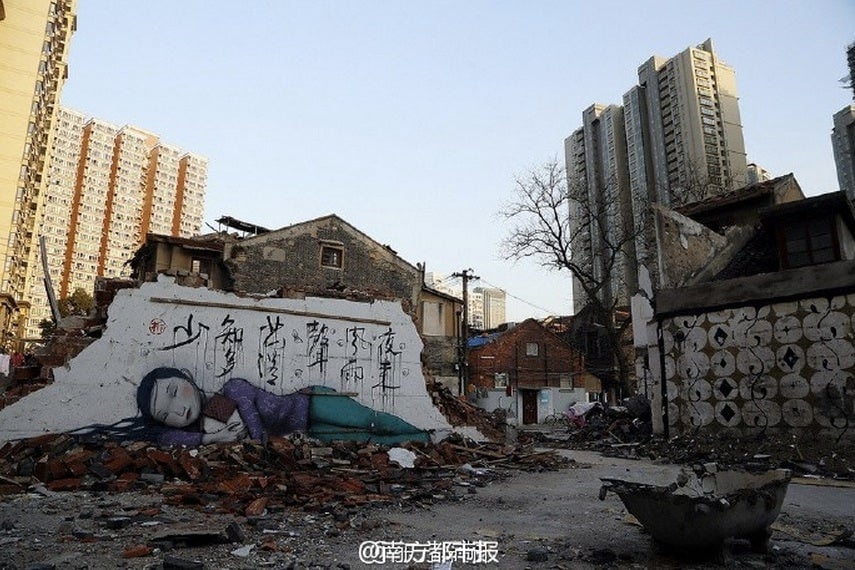
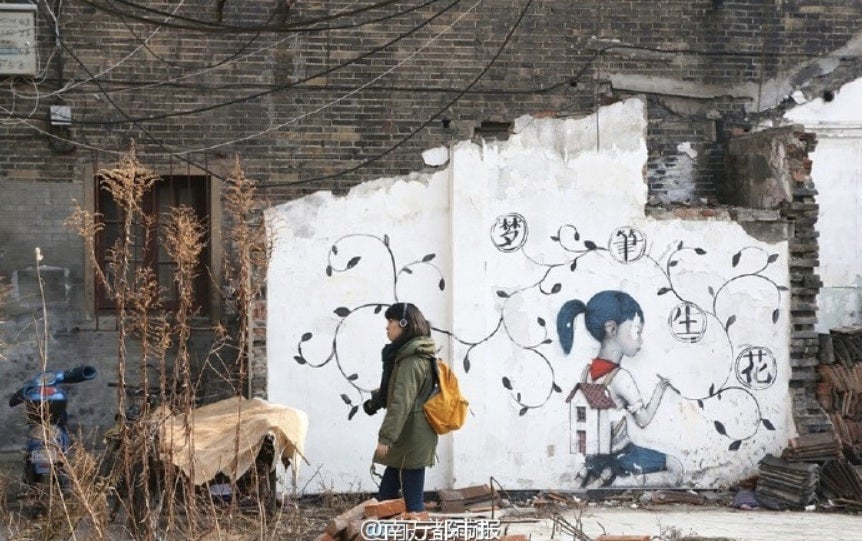
Additional reporting by Zheping Huang.